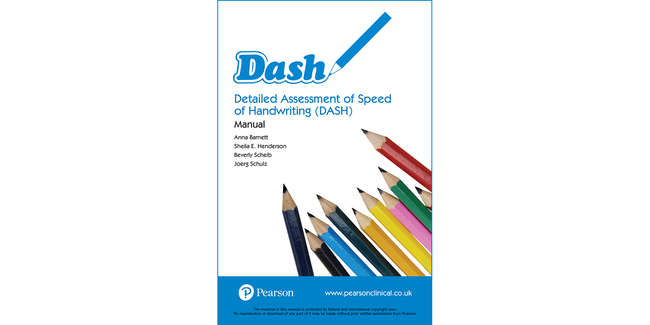The Detailed Assessment of Speed of Handwriting (DASH) can be used to assess handwriting speed - ideal for providing evidence for Access Arrangements for Key Stage 2 National Curriculum Tests and for General Qualifications. Guidance on using this test in your telepractice.DASH-2 - Now available to order!
Detailed Assessment of Speed of Handwriting
DASH
The Detailed Assessment of Speed of Handwriting (DASH) can be used to assess handwriting speed - ideal for providing evidence for Access Arrangements for Key Stage 2 National Curriculum Tests and for General Qualifications. Guidance on using this test in your telepractice.DASH-2 - Now available to order!Choose from our formats
Test forms & reports
Booklets, record forms, answer sheets, report usages & subscriptions
1 option
Support materials
Manuals, stimulus books, replacement items & other materials
3 options
All products
All tests and materials offered for DASH
4 options